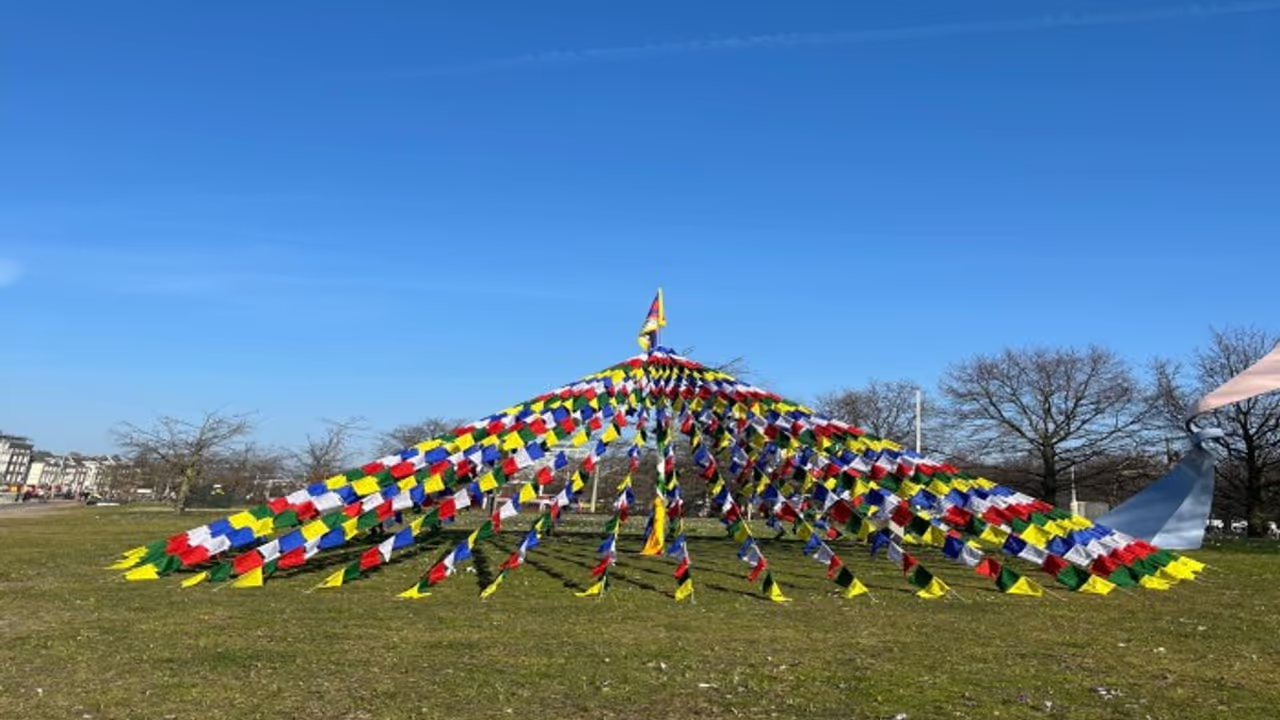China is systematically erasing Tibetan culture through language suppression, religious control, heritage destruction, and digital surveillance. International condemnation is growing, while the Tibetan diaspora fights to preserve its identity against Beijing’s relentless Sinicization policies.
New Delhi: In the thin air of Tibet's sprawling plateau, a quiet battle rages — not fought with weapons or armies, but with language, education, and policy.

Over six decades after Beijing asserted control over Tibet, the Chinese government's recent strategies have sharply intensified a systematic effort aimed at erasing Tibet’s distinct cultural identity.
The targets are clear: language, religion, cultural landmarks, and education. Collectively, these efforts have led many observers to label China's approach as a new form of cultural genocide, reminiscent of the cultural revolution, but operating through subtler, bureaucratic means.
A Language Silenced
For generations, Tibetan was the heartbeat of the region’s identity, echoing through monasteries, homes, and marketplaces. But in recent years, Mandarin Chinese has become the mandatory language of instruction across Tibetan schools, with Tibetan language classes relegated to a peripheral subject.
In urban regions like Qinghai Province, Tibetan-language signage has gradually vanished, replaced by Chinese characters.
Tibetan youth increasingly speak Mandarin by default, reflecting a forced assimilation facilitated by China's education system.
According to international rights reports, nearly one million Tibetan children have been placed in residential boarding schools.
The purpose, critics argue, is less about improving education and more about molding a generation disconnected from their cultural roots.
Human rights organizations describe this as part of China's broader strategy of "Sinicization," intended to assimilate minorities into mainstream Han Chinese culture.
Also read: Liberal Party picks Mark Carney as Canada PM, set to succeed Justin Trudeau
Religious Identity Under Siege
For centuries, Tibetan Buddhism served as both spiritual anchor and cultural repository. Today, that foundation is being steadily undermined.
Monasteries, once vibrant centers of learning and worship, now operate under stringent surveillance. Monks and nuns face forced political indoctrination sessions, demanding loyalty to the Chinese Communist Party and explicit rejection of the Dalai Lama.
Symbolic acts of faith, like hanging traditional prayer flags, have become targets.
Over the past five years, Tibetan monasteries such as Yachen Gar and Larung Gar, renowned as centers of Buddhist scholarship, have faced extensive demolitions and forced evictions. The choice is stark: conformity or closure.
China has also actively asserted control over Tibetan religious leadership, notably through the appointment of the 11th Panchen Lama, rejecting the candidate recognized by the Dalai Lama and installing its own choice instead—a strategy aimed at controlling the succession of future religious leaders, including the Dalai Lama himself.
Erasing Heritage from the Landscape
In addition to silencing religious and linguistic expression, China's infrastructure and development initiatives have directly impacted Tibet's physical cultural heritage.
Iconic monasteries, some centuries old, have been demolished to clear land for massive infrastructure projects, including hydropower dams and industrial developments.
Recently, statues of revered Buddhist figures in Drago county were razed, prompting international outcry.
UNESCO and international preservation bodies have noted with growing alarm the transformation of Tibetan heritage sites into tourist attractions stripped of their original cultural context, rebuilt with distinctly Chinese architectural motifs.
A Digital Prison
Complementing physical measures, China's surveillance apparatus has transformed Tibet into a digital police state.
Facial recognition cameras, AI-powered tracking systems, and compulsory smartphone apps monitor Tibetans' movements, conversations, and even their emotional states.
Traditional festivals and cultural gatherings, central to Tibetan identity, are heavily policed, and authorities swiftly quell even the slightest hint of dissent.
Chinese cybersecurity laws have criminalized online discussions about Tibetan identity and culture, effectively silencing any meaningful digital resistance.
Global Concern Grows Louder
International reactions to China's cultural crackdown in Tibet have intensified in recent years.
A coalition of nations — including the United States, Germany, the United Kingdom, Japan, Canada, and Australia — have raised Tibet at United Nations forums, denouncing China's human rights violations and forced assimilation policies.
The US Congress introduced the Resolve Tibet Act in 2024, which directly challenges China's sovereignty claims and advocates for renewed dialogue with the Dalai Lama.
Tibetan advocacy groups, along with human rights organizations, have increasingly coordinated global campaigns to spotlight China's abuses, heightening international awareness and diplomatic pressure.
Diaspora’s Fight to Preserve Identity
Amid China's intensifying crackdown, the Tibetan diaspora continues to act as custodians of their endangered heritage.
Tibetan schools in exile teach a curriculum steeped in traditional language, history, and culture.
Digital libraries and global cultural festivals—held from Paris to New Delhi—offer a poignant counter-narrative to China's enforced cultural erasure.
Yet the odds remain daunting. Without sustained international pressure, many fear China's quiet campaign of assimilation will continue until Tibet's unique cultural identity is irreversibly diminished.
On this anniversary of the Tibetan Uprising, it is clear the fight for Tibet’s cultural survival has entered its most critical phase.
